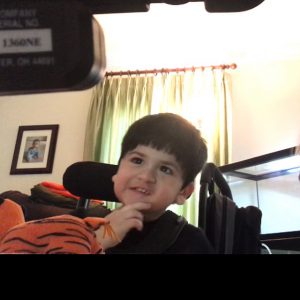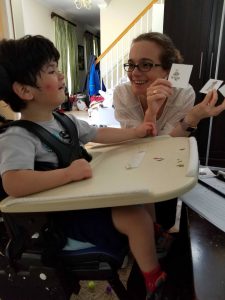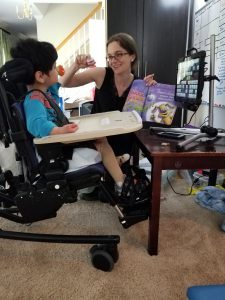 Although Joey loves art projects I often struggle to find appropriate projects he can access easily. Painting projects always please him, but it usually ends up being a rather large mess and I can only get paint on someone else’s carpet so many times a month. Painting also tends to be over quickly and does not always allow him to be overly independent or purposeful.
Although Joey loves art projects I often struggle to find appropriate projects he can access easily. Painting projects always please him, but it usually ends up being a rather large mess and I can only get paint on someone else’s carpet so many times a month. Painting also tends to be over quickly and does not always allow him to be overly independent or purposeful.
To prepare for Joey’s upcoming beach trip we read Penguin Goes on Vacation by Salina Yoon. I wanted to do a penguin art project but black paint intimidated me, and construction paper tends to be hard for Joey to hold without crumbling or ripping. [Read more…]

 Sometimes I find it takes a long time to explain Joey’s successes because there is so much background needed to set the stage for each story. Sometimes it involves explaining where words are on his AAC device, or how he uses his AAC device and words to communicate, or even what an AAC device is. These stories get complicated. That being said, read on because I think you’ll be as proud of Joey as I am.
Sometimes I find it takes a long time to explain Joey’s successes because there is so much background needed to set the stage for each story. Sometimes it involves explaining where words are on his AAC device, or how he uses his AAC device and words to communicate, or even what an AAC device is. These stories get complicated. That being said, read on because I think you’ll be as proud of Joey as I am.  “I want to eat the mueberries!” I made the puppet say, “What rhymes with mueberries?” Joey scanned his hand over the two pictures of fruit on his tray – bananas and blueberries. Then, instead of handing me the picture like I expected he went into his words and said blueberries. “Exactly! Mueberries/Blueberries rhymes!” I celebrated, and then made my puppet pretend to eat up the mueberries while Joey looked on confused. I don’t think he appreciated my game although he was fine answering my rhyming questions.
“I want to eat the mueberries!” I made the puppet say, “What rhymes with mueberries?” Joey scanned his hand over the two pictures of fruit on his tray – bananas and blueberries. Then, instead of handing me the picture like I expected he went into his words and said blueberries. “Exactly! Mueberries/Blueberries rhymes!” I celebrated, and then made my puppet pretend to eat up the mueberries while Joey looked on confused. I don’t think he appreciated my game although he was fine answering my rhyming questions.  It’s appropriate that one of Joey’s current favorite books is
It’s appropriate that one of Joey’s current favorite books is  “How many dogs are there now?” I read aloud to Joey, as we worked our way through one of our current favorite books,
“How many dogs are there now?” I read aloud to Joey, as we worked our way through one of our current favorite books, 
